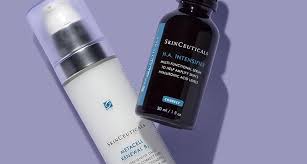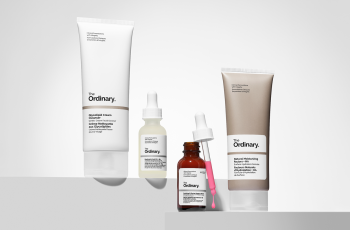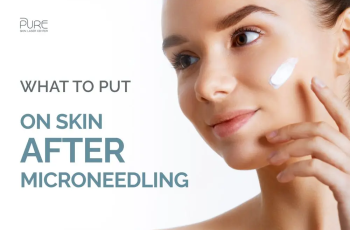
.webp)
.webp)
.webp)
Damp vs. Dry Skin: How Moisture Affects Your Skincare Routine
.webp)
.webp)
The way you apply skincare products—whether on damp or dry skin—can significantly impact how effective your routine is.
.webp)
.webp)
.webp)
From serums to oils, the level of moisture on your skin can determine how quickly and how deeply the product absorbs.
.webp)
.webp)
It’s not just about the ingredients in your skincare products, but how they interact with the surface of your skin.
.webp)
.webp)
.webp)
In this article, we’ll explore why applying skincare on damp skin is often beneficial and when it’s better to go for dry skin.
.webp)
.webp)
What Happens When You Apply Skincare on Damp Skin?
.webp)
.webp)
.webp)
When your skin is slightly damp—think of it as “just out of the shower” moist—it creates a slightly different environment for your skincare products. Here’s what happens:
.webp)
.webp)
Increased Absorption: Damp skin creates a hydrated surface, which can help ingredients penetrate more effectively.
.webp)
.webp)
.webp)
Hydrophilic (water-loving) ingredients like Vitamin C or Niacinamide are absorbed faster and more deeply when the skin is still moist.
.webp)
.webp)
Better Spreadability: The moisture on your skin helps creams and serums spread more evenly. The slight fluidity allows the product to glide across the skin, ensuring an even and complete application.
.webp)
.webp)
.webp)
This increased penetration and smoother application are just two reasons why you might want to apply products on damp skin. But let’s break down how this works with specific types of ingredients.
.webp)
.webp)
Should I Apply Vitamin C on Damp or Dry Skin?
.webp)
.webp)
.webp)
Vitamin C is a hydrophilic ingredient, meaning it is water-soluble and loves water. This makes it a great candidate for applying on damp skin.
.webp)
.webp)
After cleansing your skin with warm water and a low pH cleanser (tailored to your Baumann Skin Type), pat your skin lightly with a towel so that it remains slightly damp.
.webp)
.webp)
.webp)
Then, apply your Vitamin C serum before the skin dries completely.
.webp)
.webp)
Why is this beneficial? When skin is damp, the Vitamin C serum can penetrate deeper into the skin, allowing for faster and more effective absorption.
.webp)
.webp)
.webp)
This is particularly useful for ingredients like ascorbic acid that rely on water to travel deeper into the dermis.
.webp)
.webp)
Quick Tip: After applying your Vitamin C serum on damp skin, finish with a moisturizer to seal in the hydration.
.webp)
.webp)
.webp)
What Is Damp Skin?
.webp)
.webp)
You’ve probably heard the term “damp skin” before, but what does it actually mean? Damp skin refers to skin that is slightly wet—usually right after washing or showering.
.webp)
.webp)
.webp)
The key is that it’s not dripping wet, but there’s still some residual moisture on the surface.
.webp)
.webp)
Imagine stepping out of the shower and lightly towel-drying your face; your skin is still moist but not soaking wet. This is the ideal state for applying certain skincare products.
.webp)
.webp)
.webp)
Why Should I Apply Products on Damp Skin?
.webp)
.webp)
There are two primary reasons applying products to damp skin is beneficial:
.webp)
.webp)
.webp)
Enhanced Penetration of Active Ingredients: Moist skin allows ingredients, especially hydrophilic ones, to pass through more quickly.
.webp)
.webp)
This increases the chances of the product working more effectively.
.webp)
.webp)
.webp)
Better Spreadability of Creams and Serums: The presence of water on your skin makes it easier to spread thick creams and serums.
.webp)
.webp)
Water acts as a temporary carrier, allowing the product to disperse more evenly across the skin’s surface.
The water on your skin acts as a “fluid bridge,” helping products glide smoothly. As the water evaporates, the active ingredients are left behind, allowing them to settle deep into your skin.
Should I Put Niacinamide on Damp or Dry Skin?
Niacinamide is another hydrophilic ingredient that works best when applied to damp skin.
This vitamin B3 derivative is known for its anti-inflammatory properties and its ability to reduce hyperpigmentation, lighten dark spots, and promote skin barrier function.
When applied on damp skin, Niacinamide is better absorbed, allowing its benefits to penetrate the skin more effectively.
Niacinamide also helps improve the skin’s natural barrier, which means it can lock in moisture and enhance the skin’s elasticity.
Applying it to damp skin ensures you’re getting the most out of the ingredient.
Should I Use Retinol on Damp or Dry Skin?
Retinol, a form of Vitamin A, can be tricky when it comes to application. On one hand, applying retinol to damp skin allows for more absorption.
However, if you’re prone to irritation, especially in the early stages of using retinol, it’s better to apply it to dry skin.
Why? When skin is damp, the pores are more open, and the product is absorbed faster. This might increase the chances of irritation.
If you’re new to retinol or have sensitive skin, allowing your skin to dry completely before applying retinol can reduce the likelihood of redness, flaking, or peeling.
Quick Tip: If you experience irritation, switch to dry skin for retinol application and gradually increase the frequency as your skin builds tolerance.
Should I Put BHA (Salicylic Acid) on Damp or Dry Skin?
Salicylic acid, a beta-hydroxy acid (BHA), is commonly used to treat acne by exfoliating the skin and unclogging pores. For best results, salicylic acid should be applied to dry skin.
If you apply it to damp skin, the water can dilute the product, potentially reducing its effectiveness.
In fact, applying salicylic acid to wet skin can sometimes increase irritation, as it may penetrate too quickly or too deeply.
Always ensure your skin is dry before applying this exfoliating acid, especially if you are using a salicylic acid toner, cream, or serum.
Should I Apply Benzoyl Peroxide on Damp or Dry Skin?
Benzoyl peroxide is a powerful acne treatment, but it can also be quite irritating.
Always apply benzoyl peroxide on dry skin, as wet skin increases absorption, which can lead to increased side effects such as dryness, redness, or peeling.
Additionally, if you’re using hyaluronic acid in your skincare routine, be cautious. Applying hyaluronic acid after benzoyl peroxide can enhance absorption, potentially leading to more irritation.
It’s always best to follow a skincare routine tailored to your skin’s specific needs, particularly when using potent treatments like benzoyl peroxide.
Should I Apply Skin Medications on Damp or Dry Skin?
The general rule for most skin medications, including those prescribed for acne or pigmentation issues, is to apply them to damp skin.
The moisture allows for better absorption and can improve the efficacy of the medication.
However, retinoids and benzoyl peroxide are exceptions to this rule. These ingredients should be applied to dry skin to minimize irritation.
Always check with your dermatologist for personalized advice on applying medications based on your skin’s needs.
Conclusion: Damp or Dry Skin?
The choice between damp and dry skin can have a significant impact on how well your skincare products work.
For hydrophilic ingredients like Vitamin C, Niacinamide, and Retinol, applying them to slightly damp skin can increase absorption and improve their effectiveness.
On the other hand, lipophilic ingredients like oils and benzoyl peroxide should be applied to dry skin to prevent irritation and optimize absorption.
General Rule: For most skincare products (except retinoids and benzoyl peroxide), applying them to slightly damp skin can help maximize their benefits.
However, always consider your specific skin type, concerns, and the ingredients in your routine for the best results.
By understanding the science behind damp versus dry skin, you can enhance your skincare routine and ensure that you’re getting the most out of your products.



